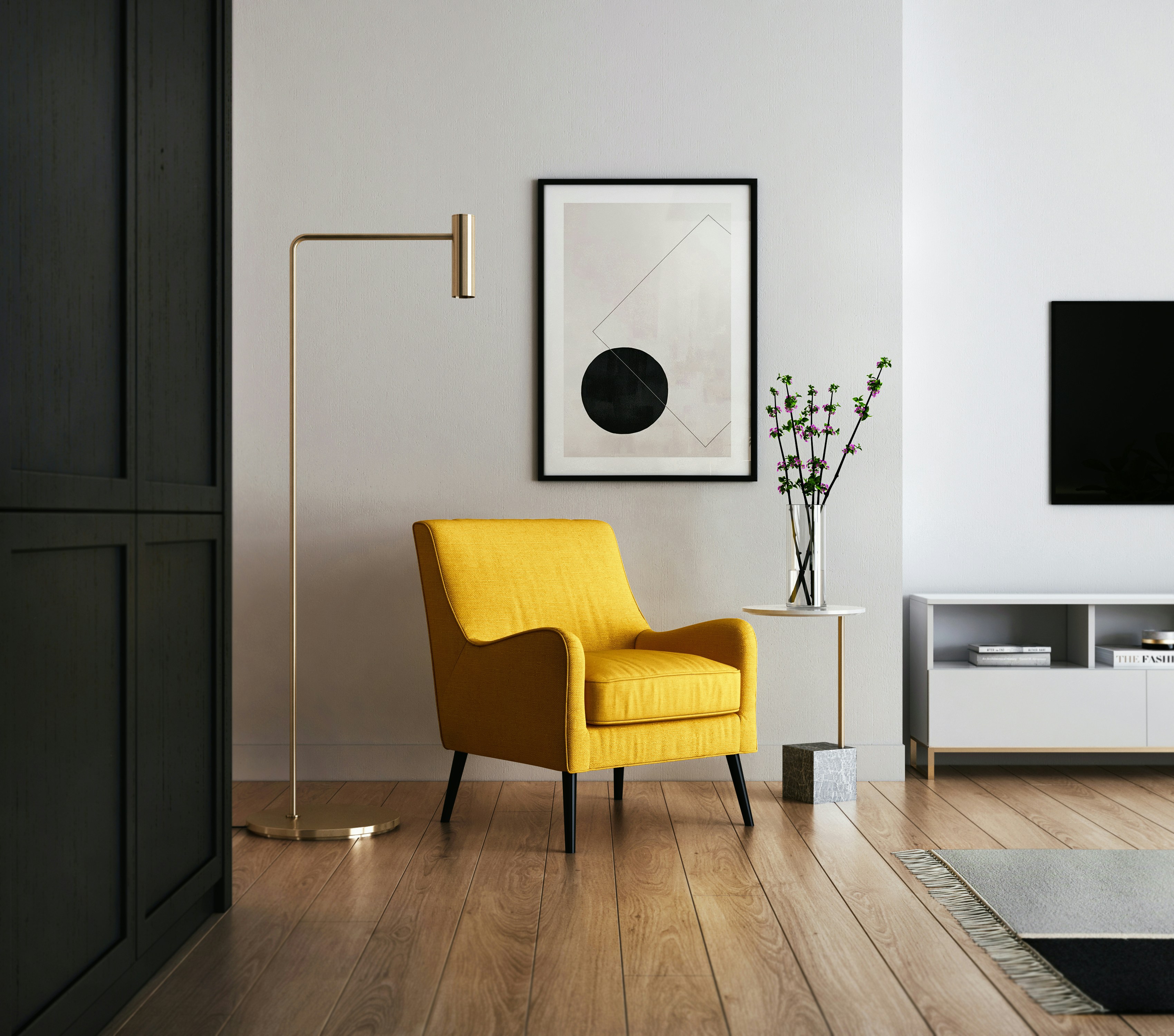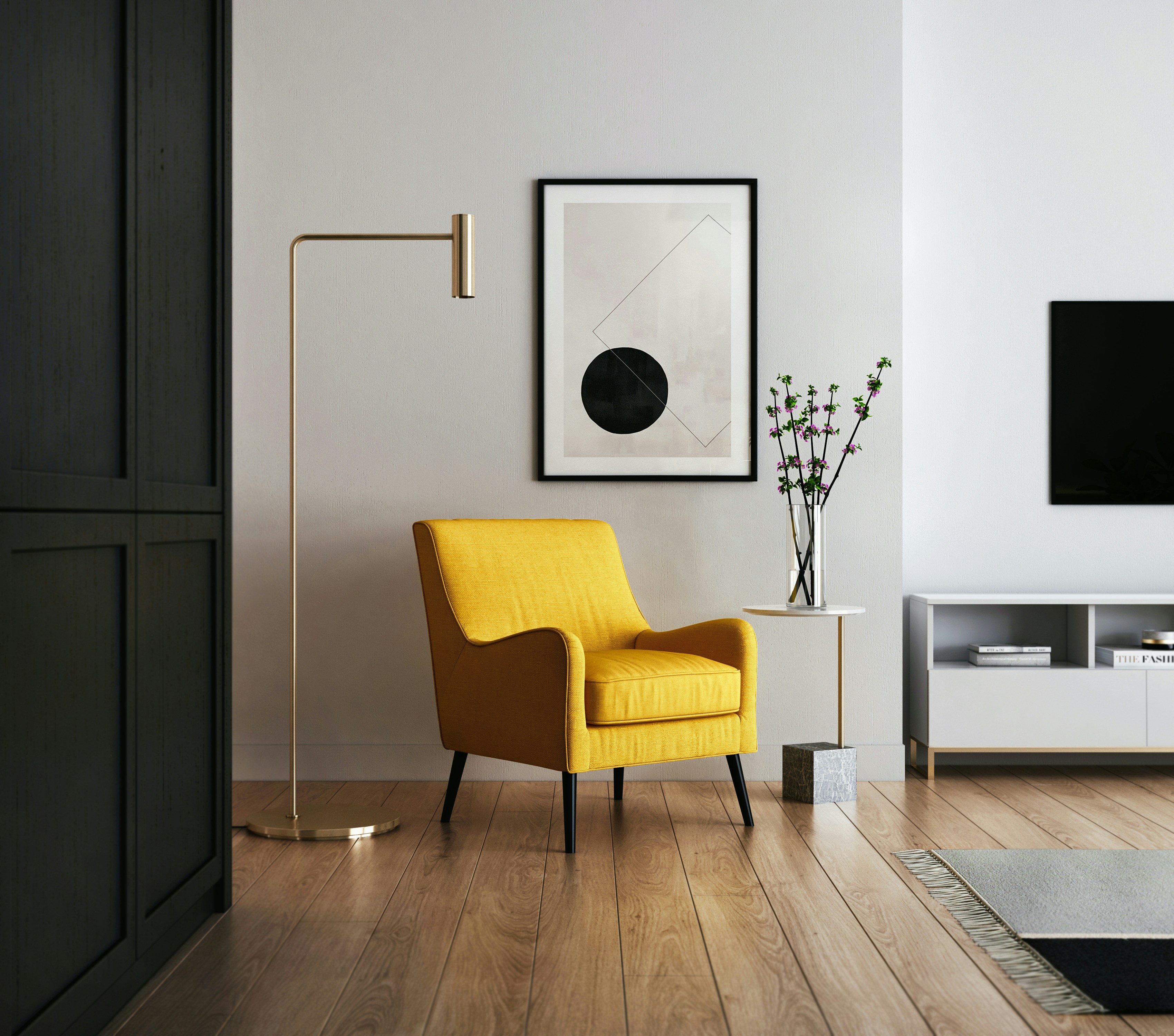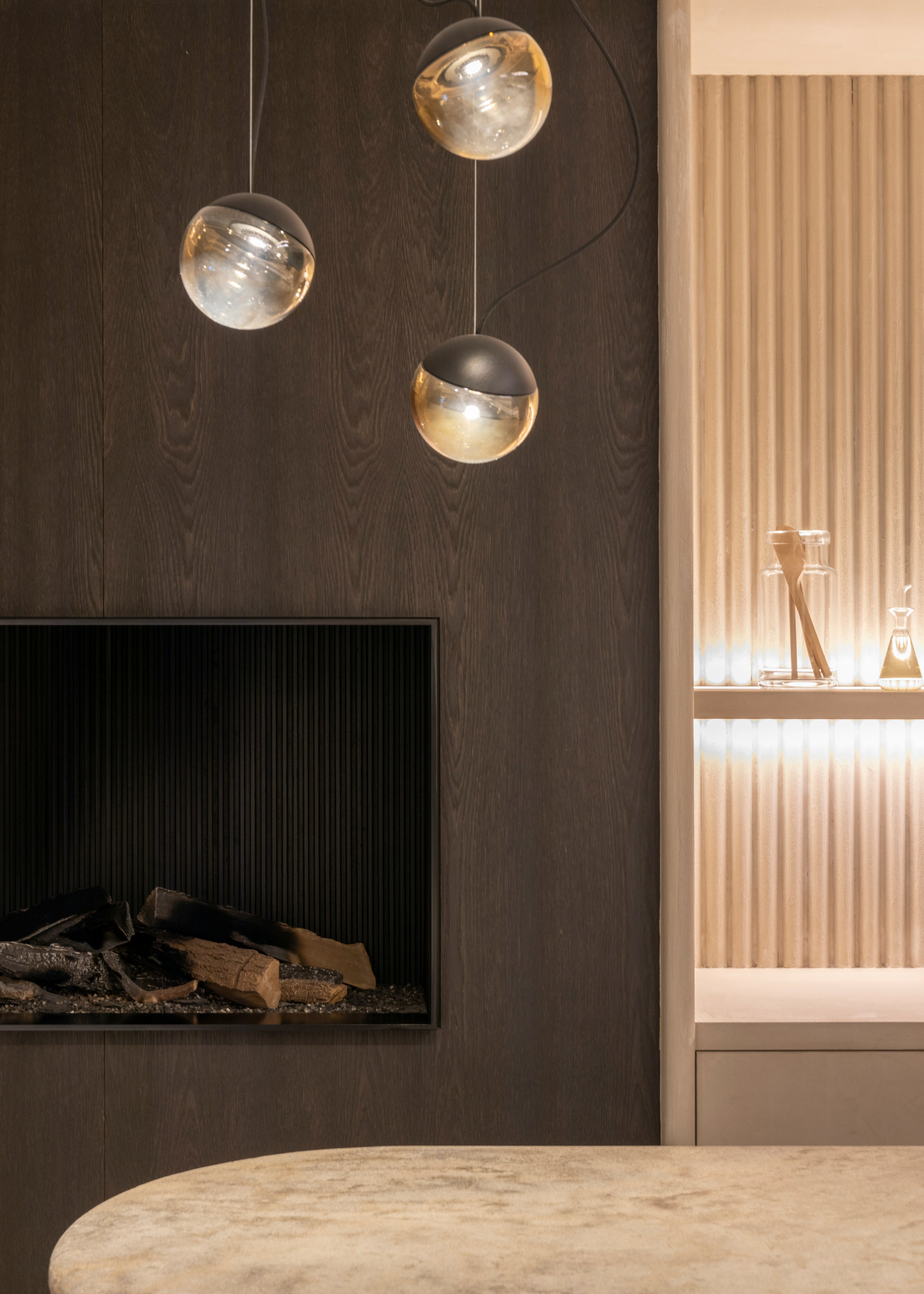
Introduction to Interior Design
Interior design is a comprehensive discipline that involves the art and science of enhancing the interior of a space to achieve a more aesthetically pleasing and functional environment. This practice goes beyond mere decoration; it encompasses a wide range of elements including spatial planning, furniture arrangement, color schemes, lighting, and the integration of various design styles. The primary objective is to improve the quality of life of the occupants and elevate the overall experience of the space.
An interior designer plays a pivotal role in this process. These professionals combine their creative expertise with technical knowledge to transform spaces according to the client’s needs and preferences. Their scope of work is extensive, covering everything from initial consultation and conceptual design to material selection and project management. By understanding the principles of design and the latest trends, interior designers are able to create cohesive and harmonious environments that reflect the personality and lifestyle of the inhabitants.
Engaging a professional interior designer for your home improvement project comes with numerous benefits. Firstly, they provide a fresh perspective and innovative ideas that you might not have considered. Their trained eye can identify potential issues and propose effective solutions, ensuring that the space is both beautiful and practical. Moreover, interior designers have access to a wide network of suppliers and contractors, which can be advantageous in terms of quality and cost-saving.
Furthermore, a well-executed interior design not only enhances the visual appeal of your home but also increases its functionality and value. Thoughtful design can improve the flow and usability of spaces, making daily activities more efficient and enjoyable. Additionally, a professionally designed home often has a higher resale value, making it a wise investment in the long term. Therefore, interior design is not just about making a space look good; it’s about creating an environment that improves overall well-being and satisfaction.
Importance of Design Choices
The importance of design choices in interior design cannot be overstated. Thoughtful selection of design elements such as color schemes, furniture, lighting, and layout plays a crucial role in transforming a space, ensuring it is both aesthetically pleasing and functional. Each design choice contributes to the overall atmosphere and usability of a home, reflecting the homeowner’s personality and lifestyle.
Color schemes are fundamental in setting the mood of a room. Neutral tones can create a sense of calm and sophistication, while bold colors can inject energy and vibrancy. The choice of colors can influence perceptions of space, making a room feel larger, cozier, or more dynamic. It is essential to consider how different colors interact with natural light and artificial lighting within the space.
Furniture selection is another pivotal aspect of interior design. The style, size, and placement of furniture can significantly impact functionality and flow. Opting for multi-functional furniture can enhance practicality, especially in smaller spaces. Moreover, the materials and textures of furniture pieces contribute to the overall tactile and visual experience, adding depth and interest to the design.
Lighting is a powerful element that can dramatically alter the appearance and mood of a room. Proper lighting design involves a mix of ambient, task, and accent lighting to ensure a space is both functional and inviting. The choice of light fixtures, whether they are chandeliers, floor lamps, or recessed lighting, can serve as focal points and art pieces in their own right, elevating the design.
The layout of a room determines how space is utilized and navigated. A well-thought-out layout considers the purpose of the room and the daily activities that will take place there. It ensures that there is a natural flow, with furniture and decor placed in a way that promotes ease of movement and accessibility. A balanced layout harmonizes the various design elements, creating a cohesive and aesthetically pleasing environment.
Ultimately, the right design choices can transform a house into a home that is both beautiful and tailored to the homeowner’s needs and preferences. By carefully considering each element, from color schemes to layouts, one can create a space that is unique, comfortable, and reflective of their personal style.
Project Management in Interior Design
Effective project management is a cornerstone of successful interior design. An interior designer’s role extends beyond aesthetic considerations, encompassing the meticulous planning and coordination required to bring a design vision to fruition. Managing timelines, budgets, and resources are critical activities that ensure the seamless execution of the design plan.
The process begins with a comprehensive project timeline. This timeline outlines each phase of the design project, from initial consultation and conceptualization to final installation. By establishing clear milestones and deadlines, interior designers can efficiently manage their time and ensure that each stage of the project progresses smoothly. Regular updates and adjustments to the timeline help accommodate any unexpected delays or changes, maintaining the project’s momentum.
Budget management is another vital component. Interior designers work closely with clients to establish a realistic budget that aligns with their design goals. This involves detailed cost estimates for materials, labor, and other expenses. Throughout the project, designers continuously monitor expenditures to prevent budget overruns. They also identify cost-saving opportunities without compromising on quality, ensuring that the project remains financially viable.
Resource management involves the careful allocation of materials and labor. Interior designers maintain relationships with a network of contractors, suppliers, and artisans. These connections are crucial for sourcing high-quality materials and ensuring skilled craftsmanship. Coordinating with various stakeholders requires effective communication and negotiation skills. Designers must ensure that all parties are aligned with the project’s objectives and timelines.
Ultimately, the success of an interior design project hinges on the designer’s ability to manage these elements effectively. By orchestrating timelines, budgets, and resources, interior designers transform abstract ideas into tangible, functional spaces. Their expertise in project management ensures that the design vision is realized efficiently and to the client’s satisfaction.
Defect Liability and Quality Assurance
In the realm of interior design, defect liability is a critical concept that ensures the integrity and quality of the final product. Defect liability refers to the period during which the interior designer is responsible for rectifying any defects or issues that arise with the work. This period typically begins upon the completion of the project and can last anywhere from six months to several years, depending on the agreement between the client and the designer.
Quality assurance in interior design projects is achieved through meticulous planning, execution, and continuous monitoring. Interior designers employ a variety of strategies to ensure that their work meets the highest standards. These strategies include thorough inspections at various stages of the project, adherence to industry best practices, and the use of high-quality materials. Regular communication with clients also plays a vital role in maintaining quality, as it allows for the timely identification and resolution of potential issues.
When defects do occur, the process for addressing them is straightforward yet crucial. Clients are encouraged to document any issues they encounter and notify the interior designer promptly. The designer is then obligated to investigate the reported defects and take the necessary steps to rectify them. This may involve repairing or replacing faulty materials, correcting installation errors, or making other adjustments to ensure the final outcome aligns with the client’s expectations.
The warranty period associated with an interior design project serves as a safeguard for clients, providing them with peace of mind. During this period, interior designers are legally bound to address any defects that fall within the scope of their responsibility. The specific terms of the warranty, including its duration and the types of defects covered, are typically outlined in the contract between the client and the designer.
In essence, defect liability and quality assurance are integral components of any successful interior design project. By holding designers accountable for the quality of their work and providing a clear process for addressing defects, these mechanisms help ensure that clients receive the high-quality results they expect and deserve.
Case Studies: Success Stories
Real-life examples can often illustrate the benefits of hiring an interior designer more effectively than generalized advice. Let us delve into a few case studies that showcase the transformation of various spaces through expert interior design. These success stories highlight the meticulous design choices, strategic project management, and efficient defect liability resolutions that interior designers bring to the table.
One notable case involves a young family looking to modernize their dated suburban home. The interior designer took a comprehensive approach, starting with an in-depth consultation to understand the family’s needs and lifestyle. The transformation began with an open-plan living area, enhancing natural light and creating a spacious feel. The designer selected a neutral color palette complemented by vibrant accent pieces, balancing modern aesthetics with functional living. Additionally, custom-built storage solutions were integrated to keep the space organized. The project was completed within the agreed timeline and budget, and the family was delighted with their new, inviting home.
Another compelling example is a couple who wanted to convert their attic into a multi-purpose space. The interior designer faced several challenges, including limited natural light and awkward ceiling angles. By utilizing skylights and strategically placed mirrors, the designer maximized light while creating an illusion of space. The choice of light-colored paint and minimalist furniture further enhanced the airy ambiance. Customized built-in shelving units provided ample storage without encroaching on the living area. The end result was a versatile and stylish attic that serves as a home office, guest room, and relaxation area.
Lastly, consider the transformation of a historic townhouse into a contemporary residence. The project required careful consideration to preserve the building’s character while incorporating modern amenities. The interior designer chose to highlight the original architectural features, such as exposed brick walls and wooden beams, blending them seamlessly with modern fixtures and fittings. Smart home technology was subtly integrated, and energy-efficient solutions were employed to enhance sustainability. The careful balance of old and new resulted in a home that is both charming and functional, demonstrating the designer’s expertise in project management and design innovation.
These case studies exemplify the tangible benefits of engaging an interior designer for home improvement. Each project showcases how thoughtful design choices, effective project management, and attention to detail can transform spaces, elevating them to new heights of functionality and aesthetic appeal.
The decision between undertaking a DIY home improvement project and hiring a professional interior designer is pivotal in determining the success of your home renovation. While the allure of DIY projects lies in their cost-effectiveness and personal touch, several potential pitfalls can arise from taking on such a significant task without professional assistance.
One of the main challenges of DIY interior design is the lack of expertise. Professional interior designers possess an extensive knowledge base acquired through years of education and experience. They are well-versed in the principles of design, color theory, and spatial arrangements, which are critical elements in creating a cohesive and aesthetically pleasing environment. In contrast, a homeowner may struggle with these concepts, leading to a disjointed or unbalanced result.
Time management is another significant concern when opting for a DIY approach. Home improvement projects can be time-consuming, requiring careful planning, sourcing materials, and executing the design. For individuals with limited free time, balancing these tasks with daily responsibilities can be overwhelming. Professional interior designers, however, streamline the process by efficiently managing the project timeline and coordinating with contractors and suppliers, ensuring timely completion without compromising on quality.
Quality assurance is a paramount advantage of hiring a professional. Interior designers have access to a wide network of trusted vendors and high-quality materials that may not be readily available to the average consumer. This access ensures that the finished product not only meets but often exceeds expectations in terms of durability and aesthetic appeal. Moreover, professionals are adept at troubleshooting unforeseen issues that may arise during the project, offering solutions that maintain the integrity of the design.
In contrast, DIY projects are susceptible to mistakes that can be costly and time-consuming to rectify. Miscalculations in measurements, improper material selections, and lack of adherence to building codes are common issues that can derail a project. Hiring a professional mitigates these risks, providing peace of mind and a seamless experience from concept to completion.
Ultimately, while DIY home improvement offers a sense of accomplishment and potential savings, the benefits of engaging a professional interior designer cannot be overstated. The expertise, efficiency, and quality assurance provided by professionals make them an invaluable asset in achieving a successful and stunning home transformation.
When embarking on a home improvement project, one of the primary concerns for homeowners is the financial aspect. Hiring an interior designer might initially seem like an added expense. However, it is crucial to recognize that interior designers bring a wealth of expertise in managing and optimizing budgets, ensuring that clients receive the best possible value for their investment.
Cost Management and Budget Optimization
Interior designers are adept at creating detailed budget plans that encompass all aspects of the project, from materials and labor to unexpected contingencies. By leveraging their extensive network of suppliers and contractors, they can often secure discounts and negotiate better rates than homeowners might achieve on their own. This cost-saving ability can significantly offset the designer’s fees, making the overall investment more economical.
Value Through Informed Choices
Another critical area where interior designers add financial value is through informed decision-making. They have a deep understanding of the cost implications of various design choices, allowing them to guide clients towards selections that align with both their aesthetic preferences and financial constraints. For example, a designer can recommend alternative materials that provide a similar look to high-end options but at a fraction of the cost, ensuring that the final design remains within budget without sacrificing style or quality.
Efficient Project Management
Effective project management is another essential service that interior designers provide, which can result in considerable cost savings. By meticulously planning the project timeline and coordinating the various trades involved, designers help avoid delays and costly mistakes. Their oversight ensures that the project progresses smoothly, reducing the risk of budget overruns and ensuring that the final outcome meets the client’s expectations both aesthetically and financially.
In conclusion, while hiring an interior designer involves an initial expenditure, the long-term financial benefits are substantial. Through optimized budgeting, informed design choices, and efficient project management, interior designers help homeowners achieve their desired home improvements in a cost-effective manner, ultimately enhancing the value and appeal of their homes.
Conclusion: The Value of Interior Design
In the realm of home improvement, interior design emerges as the ultimate solution for transforming living spaces. Throughout this discussion, we’ve explored various facets that underscore its significance. The meticulous selection of design elements such as color schemes, furniture, and decor not only enhances aesthetic appeal but also ensures functional harmony within a home. Effective project management, a hallmark of professional interior designers, streamlines the renovation process, mitigating risks and ensuring that projects are completed on time and within budget.
Furthermore, the aspect of defect liability cannot be overstated. Professional interior designers provide a safety net, addressing any issues that may arise post-completion. This guarantees peace of mind for homeowners, knowing that their investment is protected. The strategic use of space, attention to detail, and personalized touch that interior designers bring to the table elevate the overall living experience, turning houses into homes that reflect the unique personalities and lifestyles of their inhabitants.
Ultimately, interior design is not merely about beautification; it’s about creating environments that improve quality of life, enhance functionality, and stand the test of time. For those contemplating a home improvement project, engaging a professional interior designer is a wise decision. Their expertise, creativity, and professional approach ensure that your vision is brought to life in the most efficient and effective manner possible. By investing in interior design, you are investing in a lifestyle upgrade that will yield long-lasting benefits and elevate your home to new heights of comfort and elegance.






